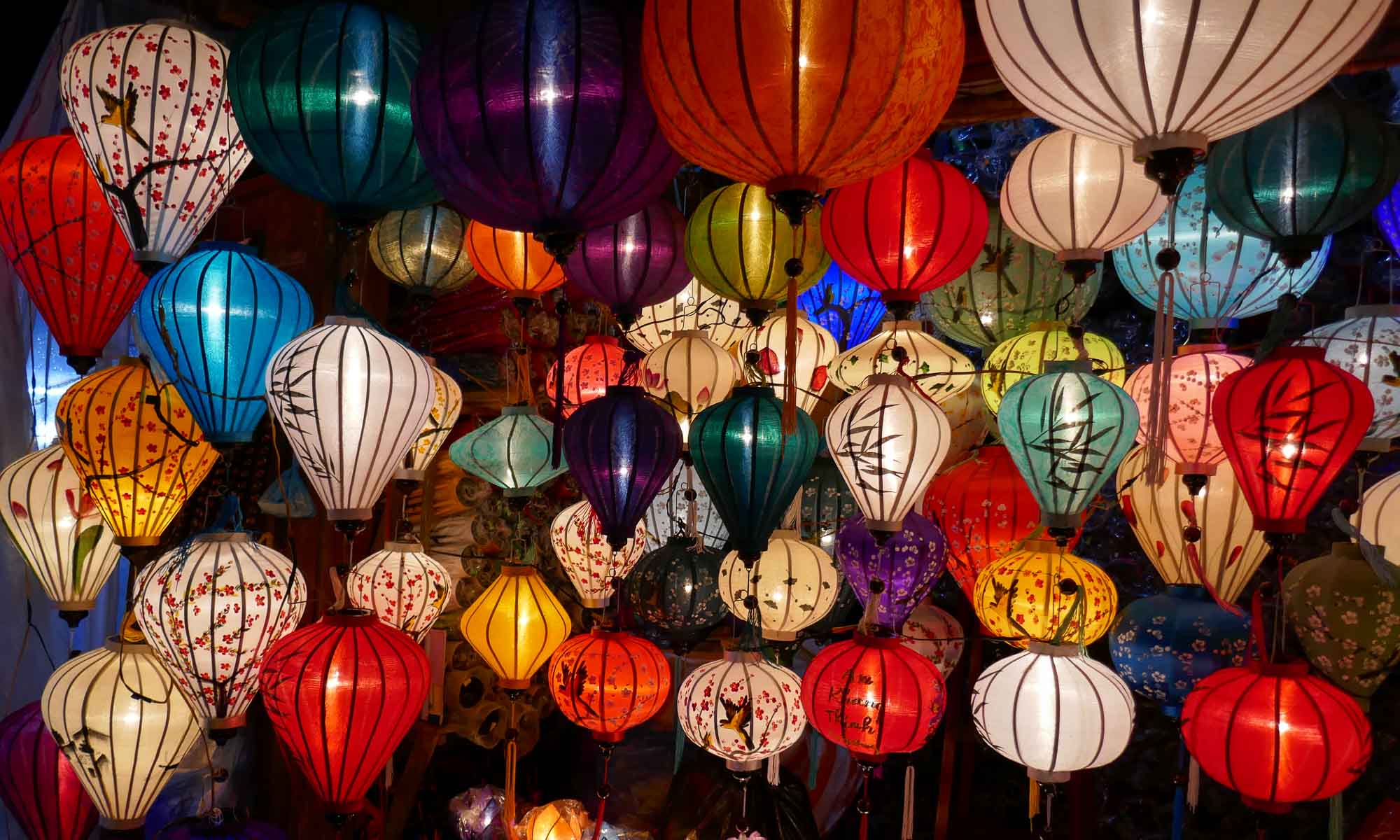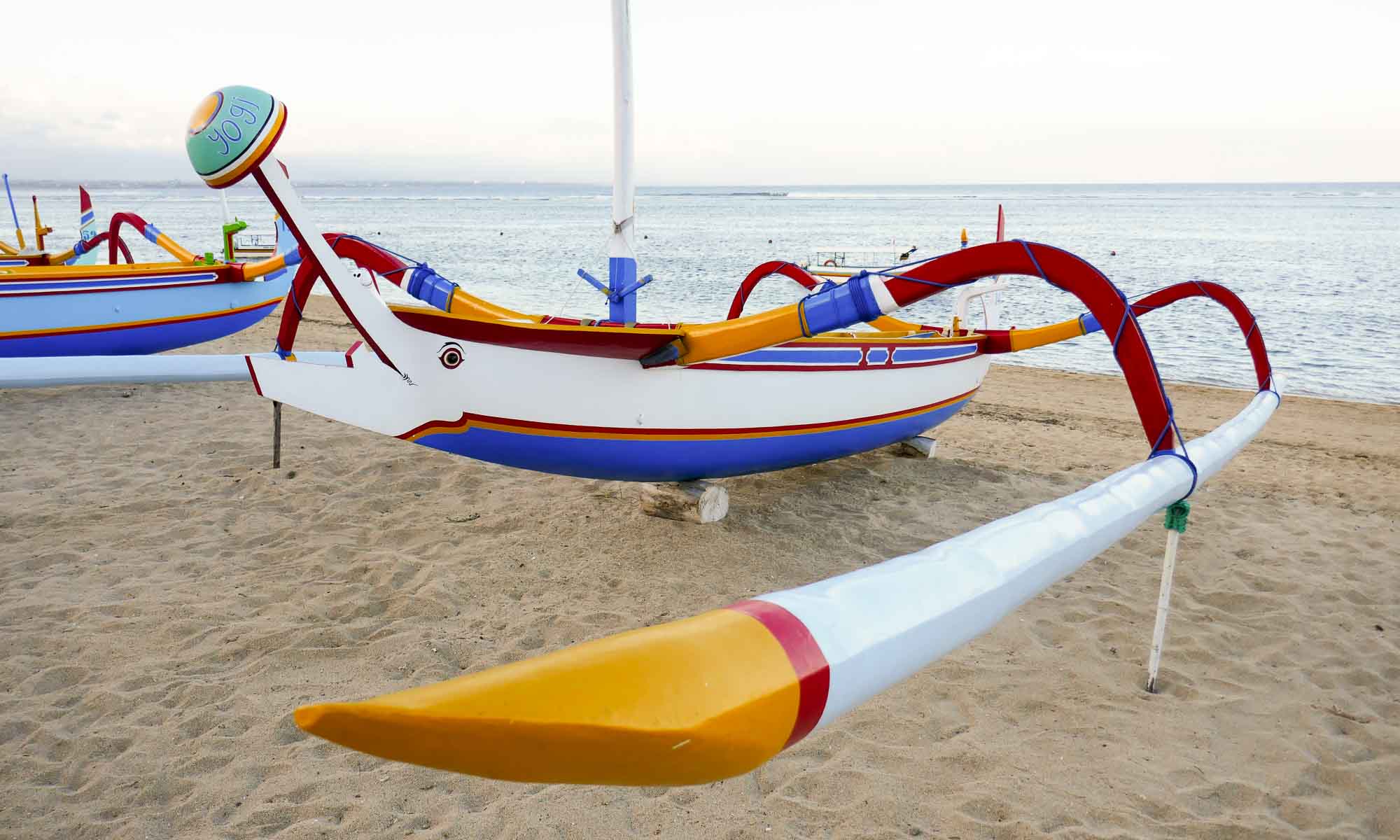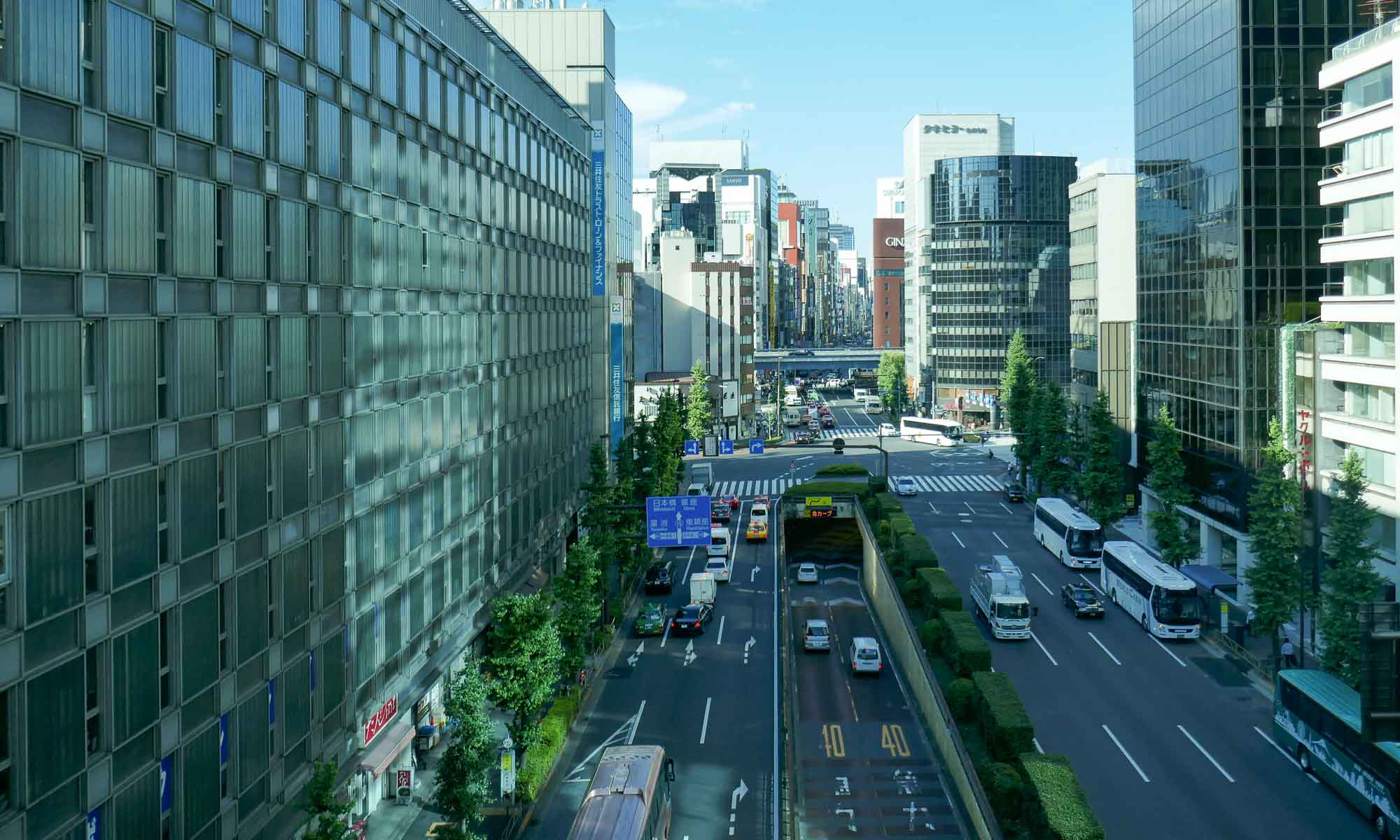Between the 15th to 19th century, Hoi An was once considered an important trading port, not only for the region but also internationally. Today, it is known worldwide as Vietnam’s culinary capital as well as the place where you can get anything custom-made, from an evening gown to a 3-piece suit in a few days.
It is a place which you will either fall in love with or hate. Love for the beautiful picturesque yellow walls and lanterns that are seen all through the Old Town, for the friendliness of the people, for the good food, or hate for the throngs of tourists that cram the streets, for the overfriendliness of some of the people (personal space is real!!) or for the exhorbitant prices being charged at some places. Regardless it became a place we will remember fondly.
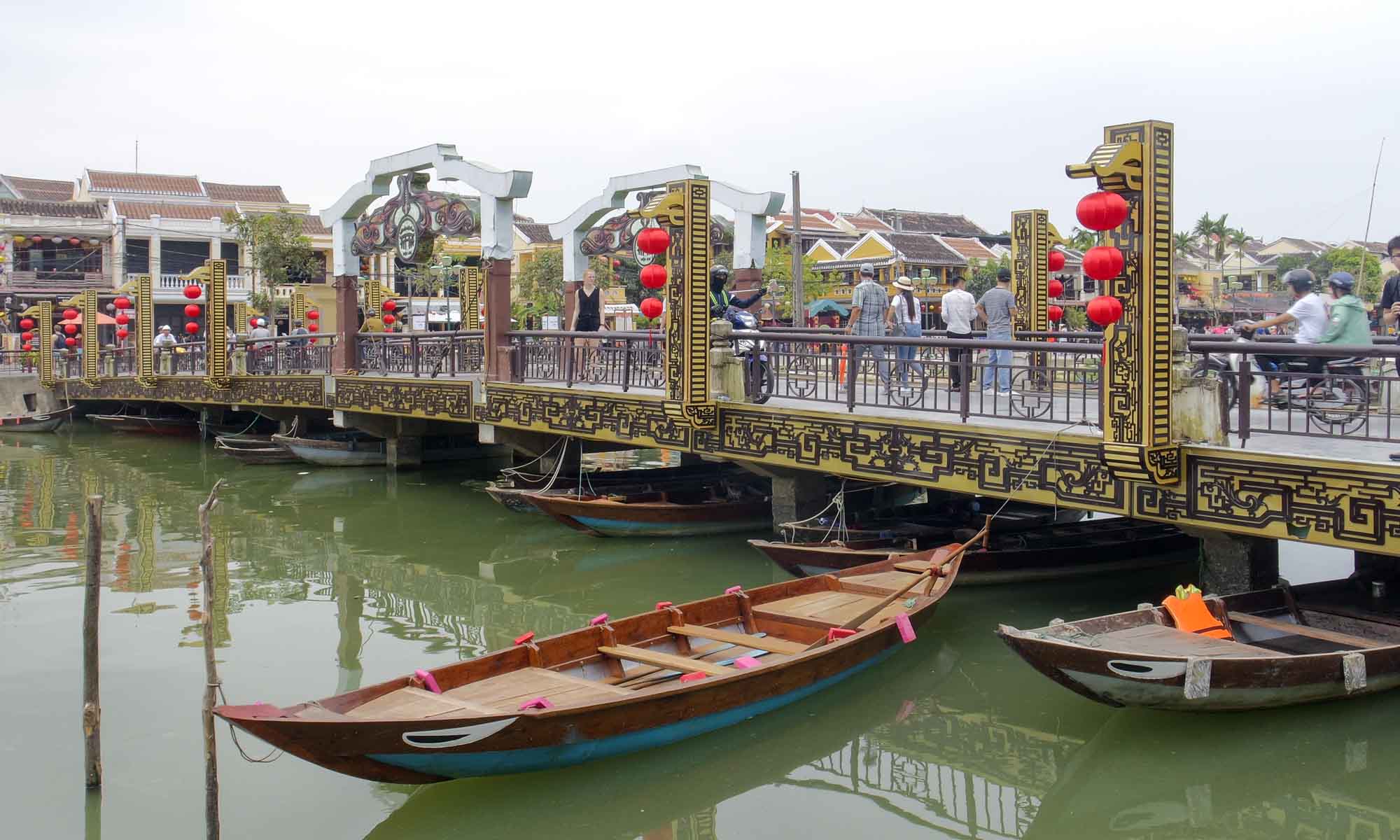
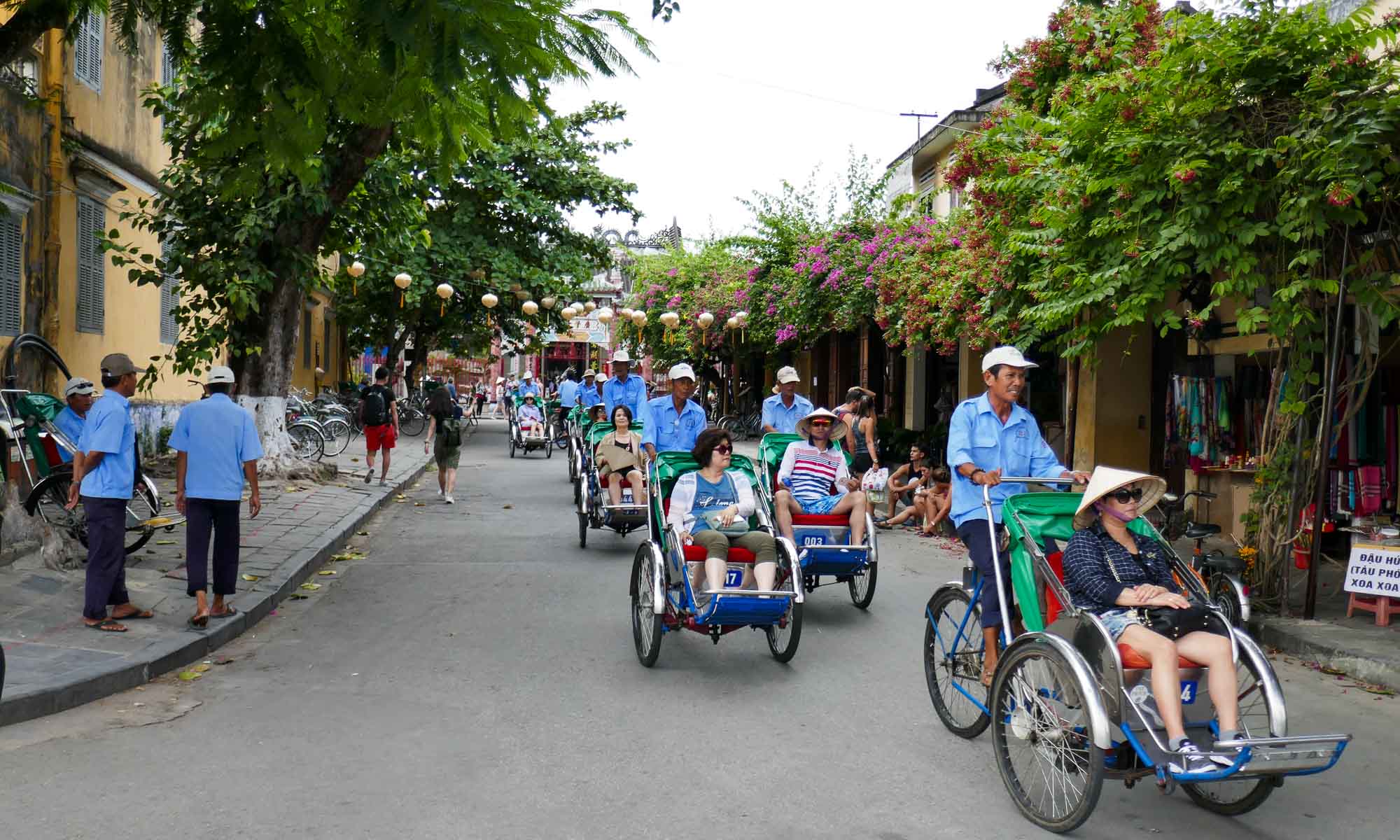
Highlights of Hoi An
Hoi An provided an opportunity to enjoy a mixture of culture, nature and beach, and for us was the perfect place to spend a week.
The Old Town
The Old Town is a picturesque quaint area, with its yellow painted buildings and hanging lanterns. It has been preserved to depict the culture and heritage of a South-East Asian trading port, with a mix of Japanese, Vietnamese, Chinese, and French architecture and was granted UNESCO World Heritage Site status in 1999.
Unfortunately, while it is beautiful to see, with most of the shop houses converted into galleries, restaurants, shops or cafes, the true culture and heritage is one that in our opinion is missing. There are a few historical places that have been preserved for which the community has imposed a fee to see. The ticket permits entry to 5 places including old houses, assembly halls, communal houses, museums and the Japanese bridge. We did not visit any of the historical places, but instead spent time wandering the streets. The most significant feature of the Old Town is the Japanese bridge, which used to demarcate the location of the Japanese settlement in the 1590s. It was built by the Japanese and has a Buddhist temple attached to it.
Old Town entrance fee: VND 120,000

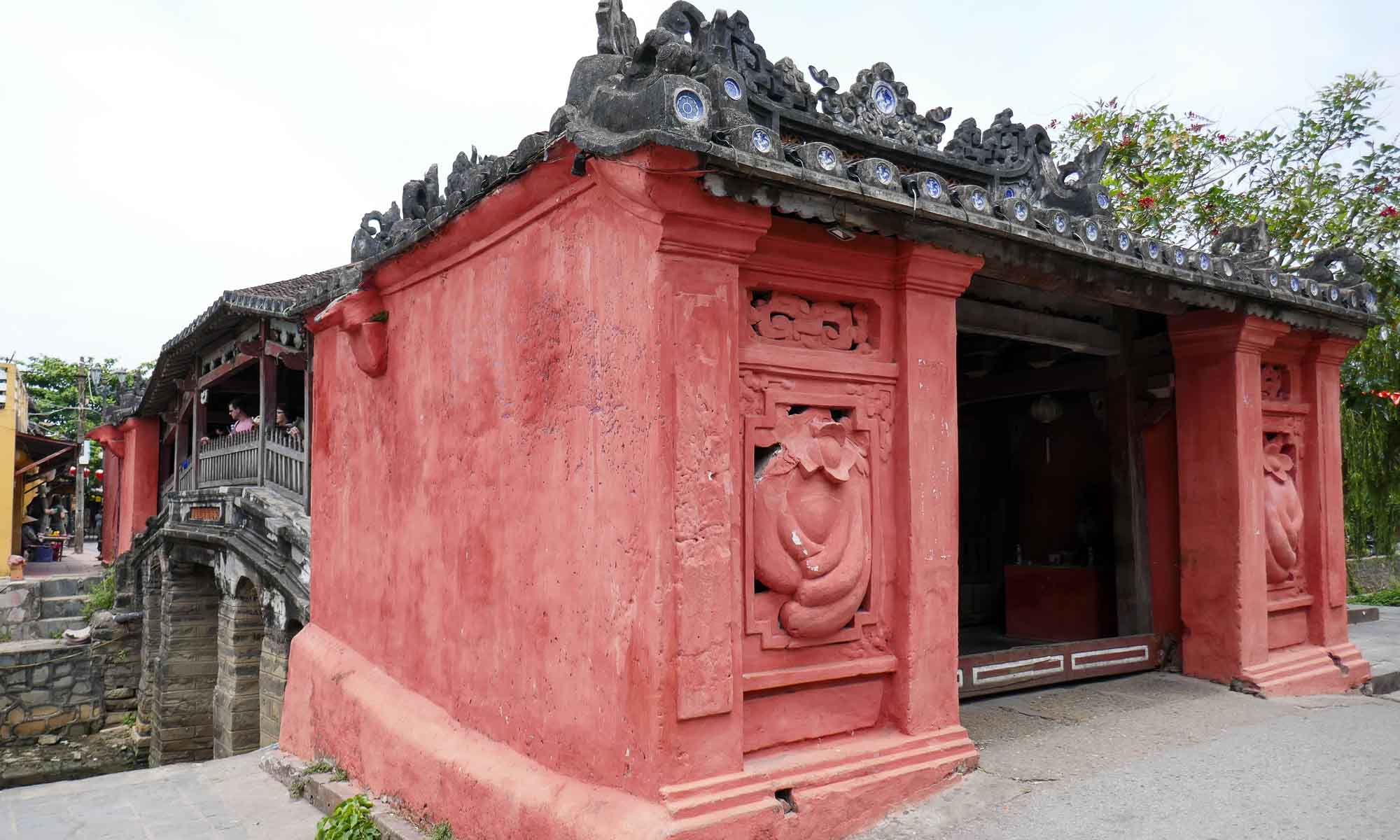

An Bang beach
Located just about 7km from Hoi An, a mere 20-25 minutes by bike is An Bang beach. The beach provided a good respite from the heat and the throngs of tourists in the city. Though there are no cycle lanes, and the ride is atimes amidst busy traffic, most local drivers are very cognizant of the tourists on bicycles and so drive with care. The road to the beach passes by rice fields, with buffalos and their caretakers waiting by the road side to lure the occasional tourist for an expensive 5-minute ride.

The beach itself is moderately developed with few restaurants and bars that offer relatively good food, and the ability to rent a sunbed for free if drinks and food are purchased. We ended up at La Plage for the two days we spent lounging at the beach, where we were able to park our bikes for free.
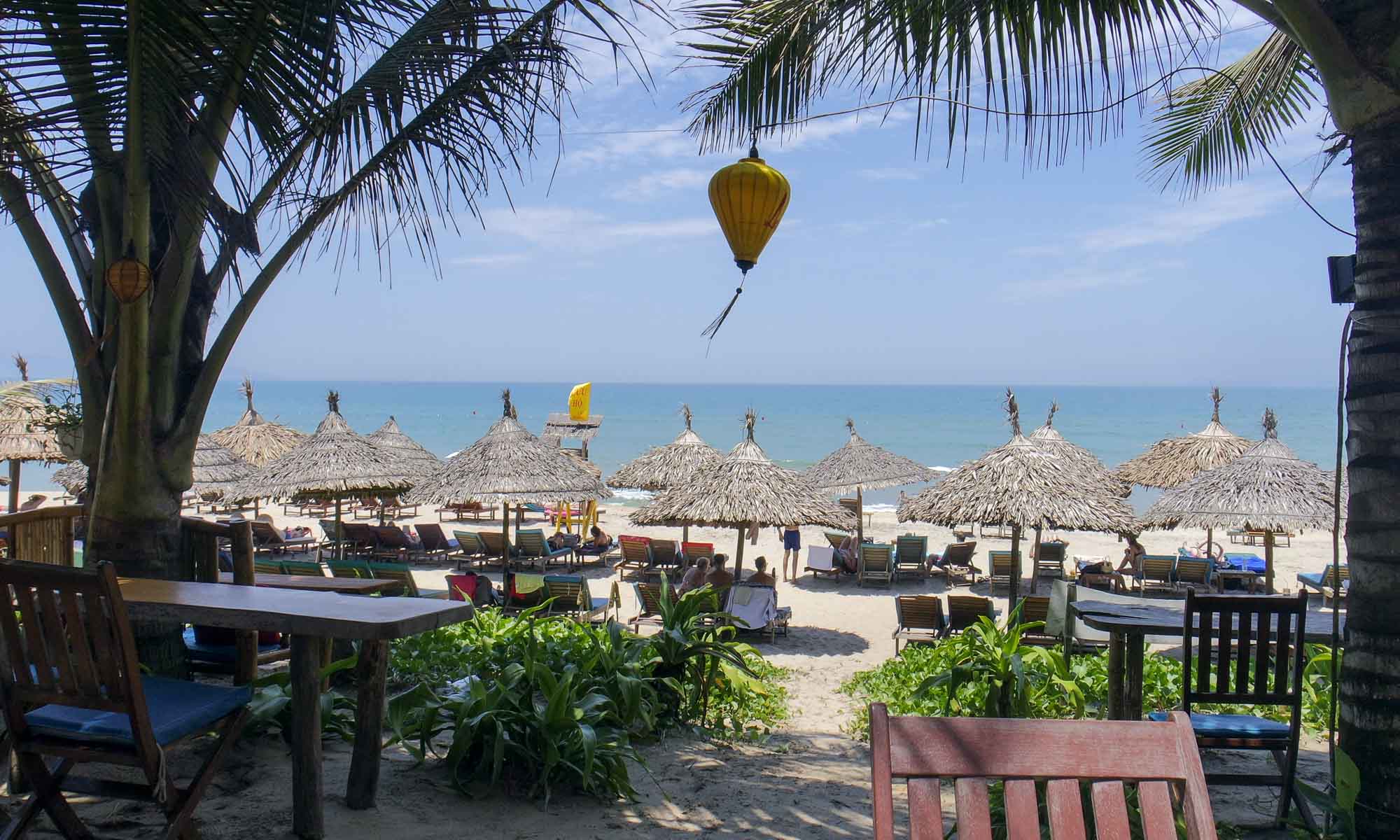
Suprisingly, we found out that in the evening the atmosphere at the beach changes, as more locals come to spend time and eat dinner. We noticed several food sellers making their way to the beach and selecting spots on the beach right in front of the sun loungers, where they will be located for the evening.
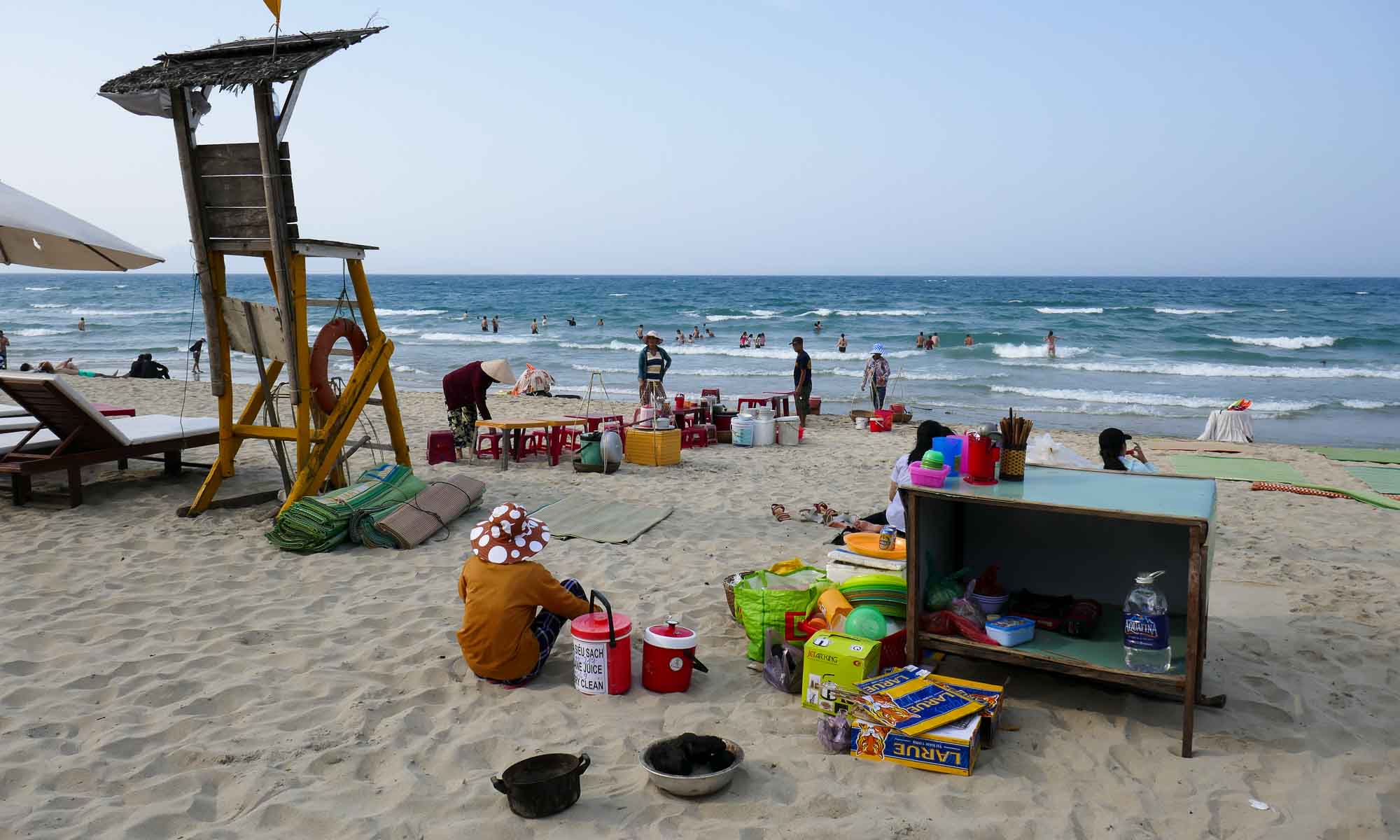
Day trip from Hoi An – Da Nang area
Da Nang is the largest city in Central Vietnam, and during the Vietnam war was used as a base by both the American and South Vietnamese air forces. We did not spend much time in Da Nang itself but instead visited the places below.
Marble Mountain
We rented a scooter for a day and rode to Marble Mountain. Marble Mountain is closer to Da Nang and is a 25-minute drive from Hoi An. Marble Mountain actually refers to a group of marble and limestone mountains named after the five elements: Earth, Water, Fire, Metal and Wood. During the Vietnam war, the mountains were used as a base and hiding place for the Vietcong and even included a hospital.
The only mountain which tourists can visit is the Water Mountain (Thuy Son). Visitors can either take an elevator to the top or walk up a set of steps to the summit (156 steps at entrance 1 and 123 at entrance 2). Since we visited in the middle of the day, we opted to take the elevator up. The area at the top of the mountain features a number of pagodas and temples, while the caves have been turned into shrines. The largest and most impressive cave is Huyen Khong cave, which has a number of holes (one caused by a bomb during the war) in the ceiling that permit the sun to shine through, creating quite an impressive site.
The best view from the top was at the top of Heaven’s cave where we could see the nearby Non Nuoc beach, the Son Tra Peninsula and Cham Islands. While most people got to the top via a small hole in the cave, limited by my fractured wrist we climbed up some steps on the outside of the cave.
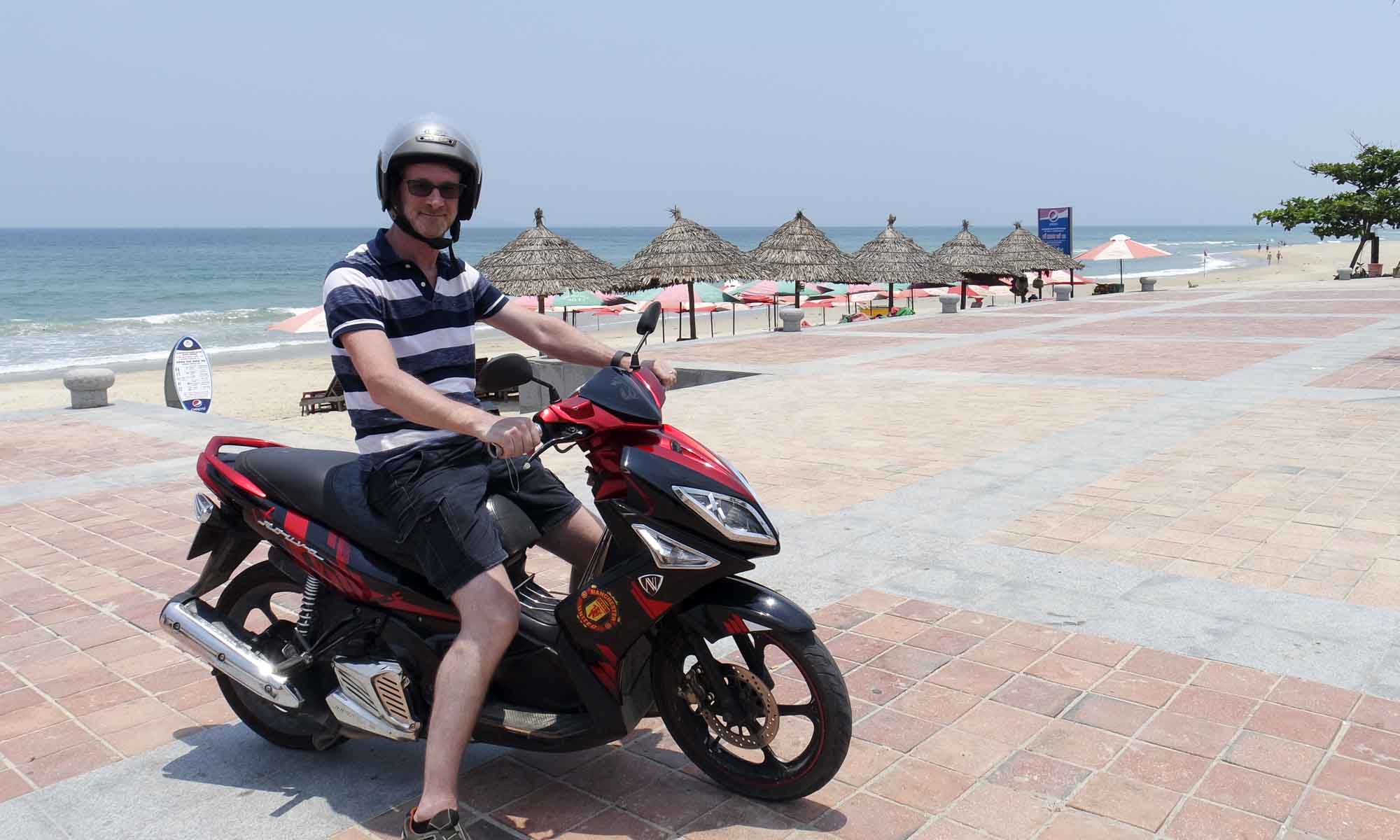
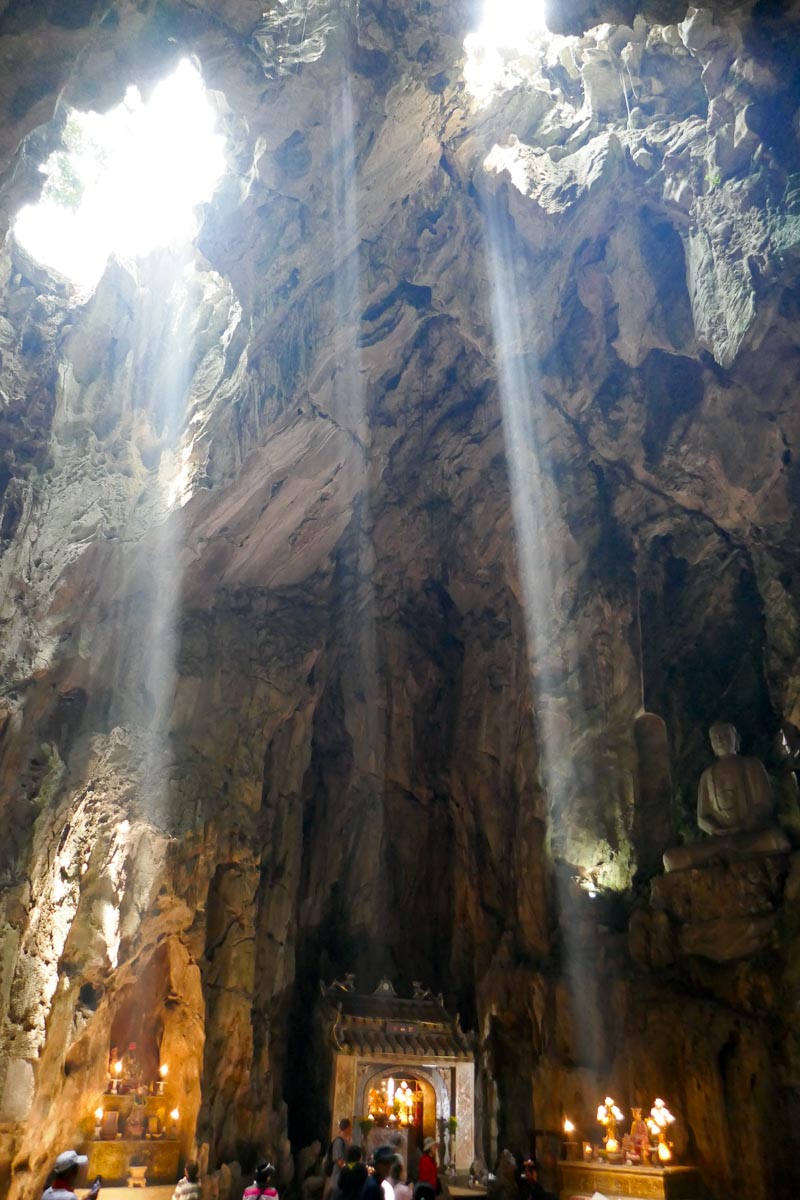
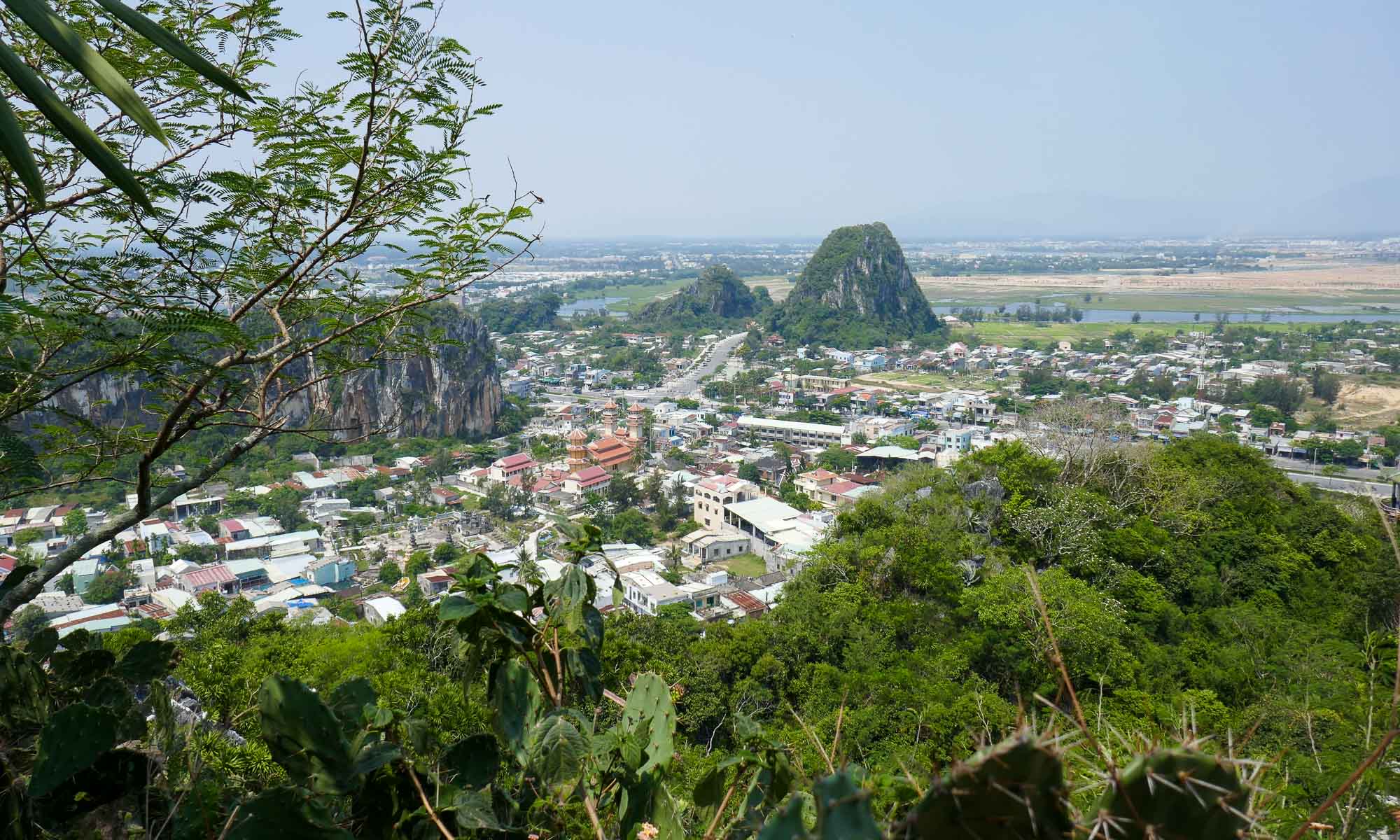
Admission fee: VND 40,000 Elevator fee: VND 15,000 Scooter rental: VND 40,000
Son Tra Mountain
Continuing up North from Marble Mountain, is the Son Tra Mountain. Also known as Monkey Mountain, it was an observation base with two radar domes during the Vietnam war, which are now in use by the Vietnam military.
The 35-minute drive up from Da Nang is along a steep and curvy road, which though quiet is getting popular among foreign tourists. While the ride was fun and the views spectacular, a more powerful motorbike would have handled the inclines better.
The most-visited spot on the mountain is the Ling Ung Pagoda, where the Goddess of Mercy (Lady Buddha) statue resides. The Goddess of Mercy statue is 69m tall and is thought to be the tallest statue of Lady Buddha in South-east Asia. It can be seen from the beaches close to Da Nang and is definitely an imposing image. The mountain is also the location of the 25m tall heritage banyan tree, which is thought to be over 1,000 years old. Most noticeable with regards to the tree, is the fact that it is anchored by several lateral roots.
The mountain is home to a number of rare animals including the Red Shanked Doucs, and while we did not spot any live monkeys, we did come across a series of monkey statues on the side of the road.
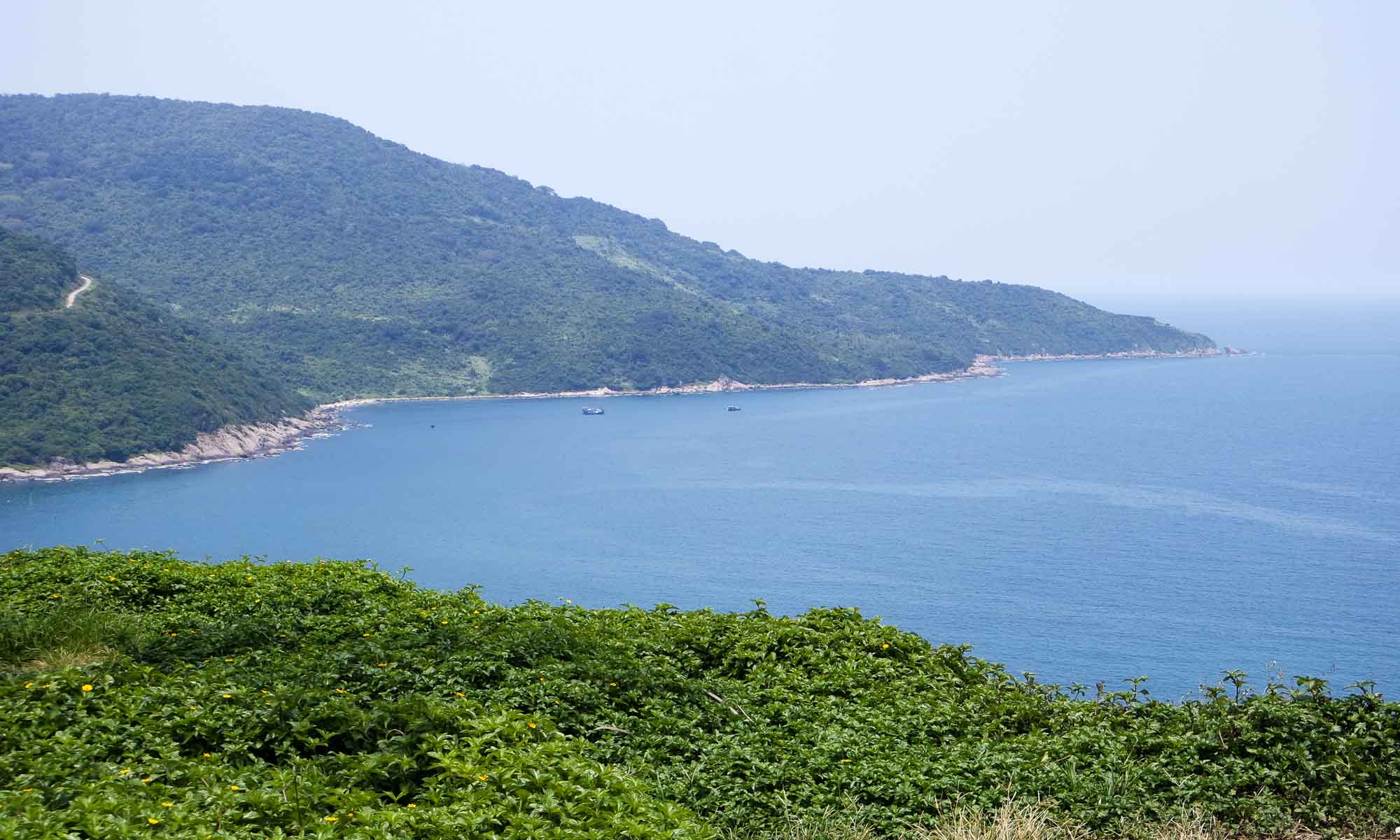
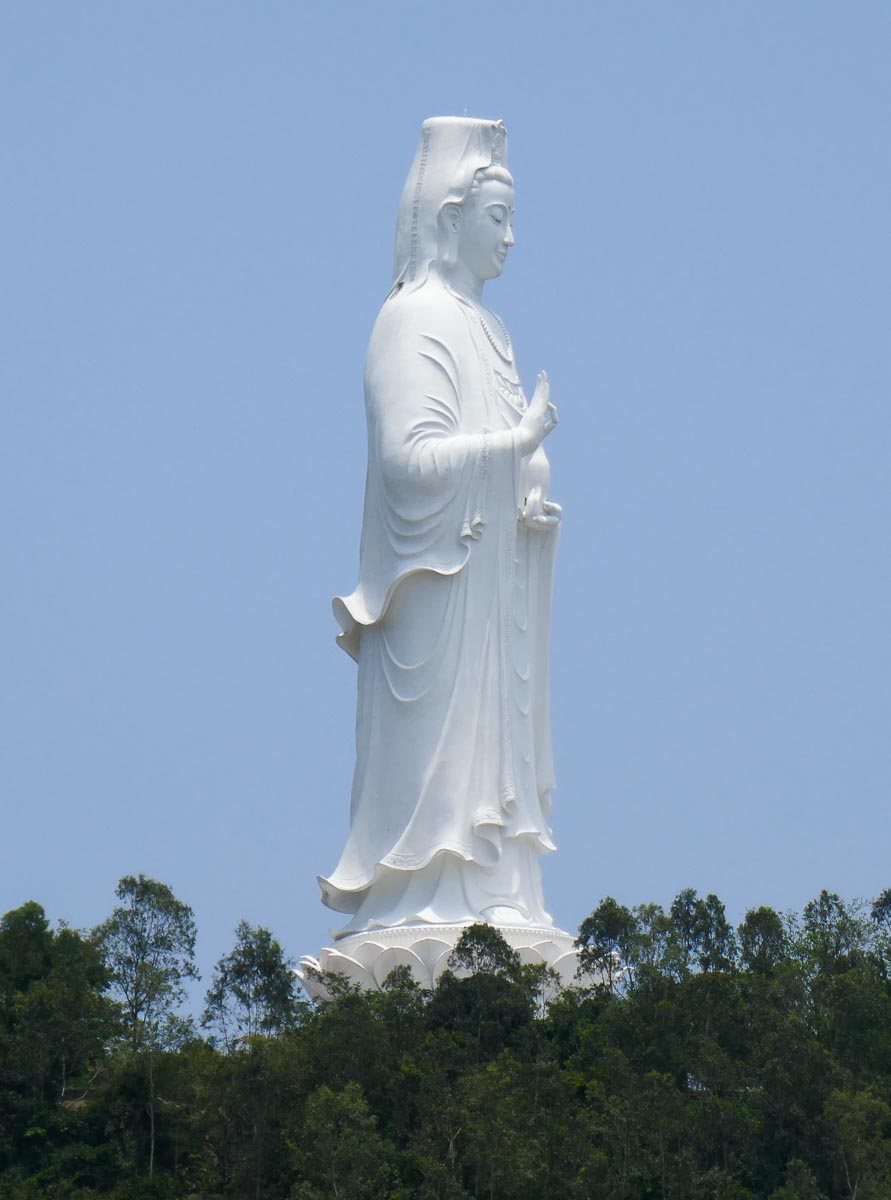
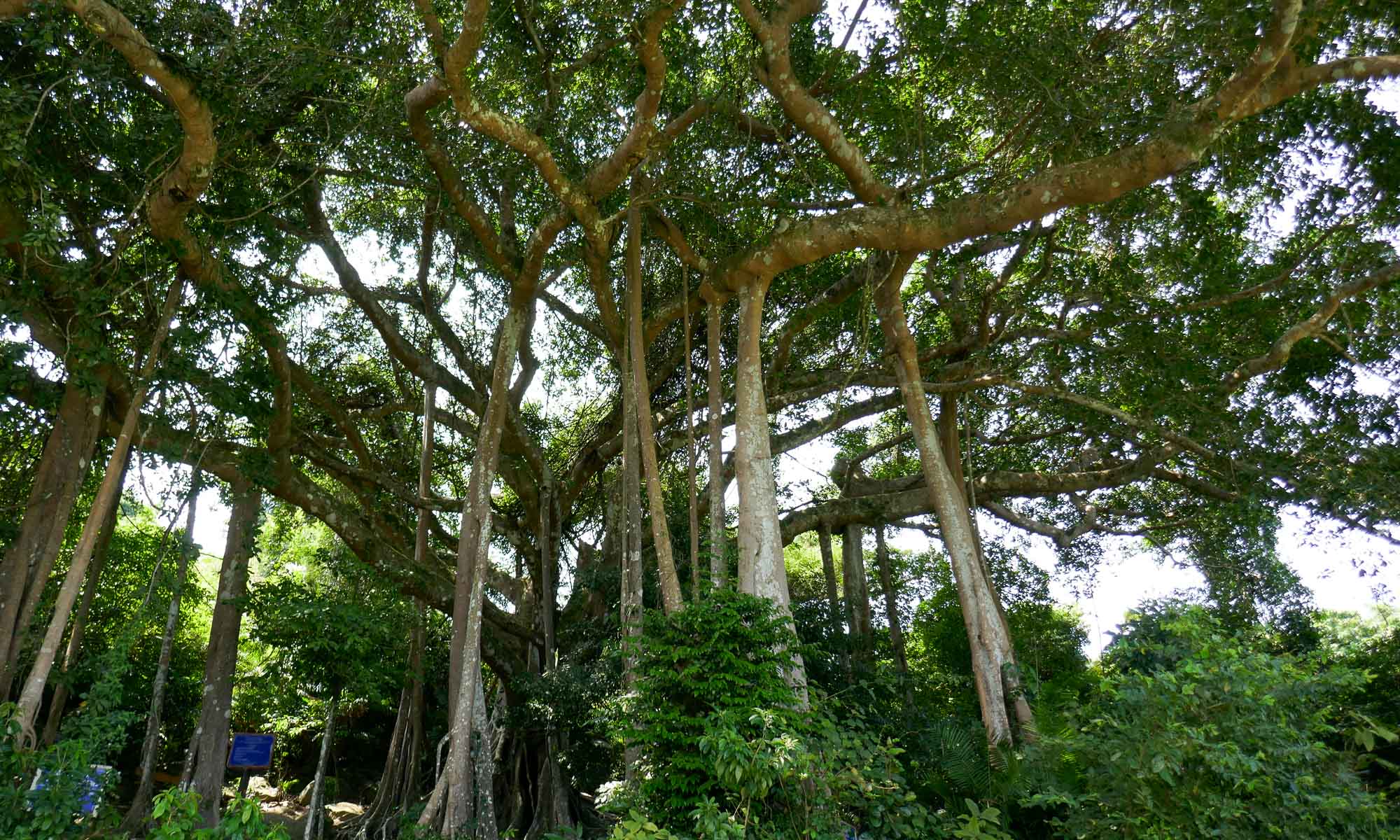

Dining in Hoi An
Depending on ones’ taste or the atmosphere required, there are several different neighbourhoods where decent restaurants can be found. While many can be found in the Old Town, prices are much higher there than elsewhere in Hoi An. A few of the Hoi An specialities we tried included Hoi An wontons and Cao Lau.
Bep Troung – The Chef
While waiting to check in to our hotel, we discovered this gem of a restaurant in the Old Town. Located on two floors above a bookstore, the look and feel is trendy and chic, while the ambiance is relaxed. We enjoyed two meals at this restaurant, and both times the staff were friendly and unobtrusive.
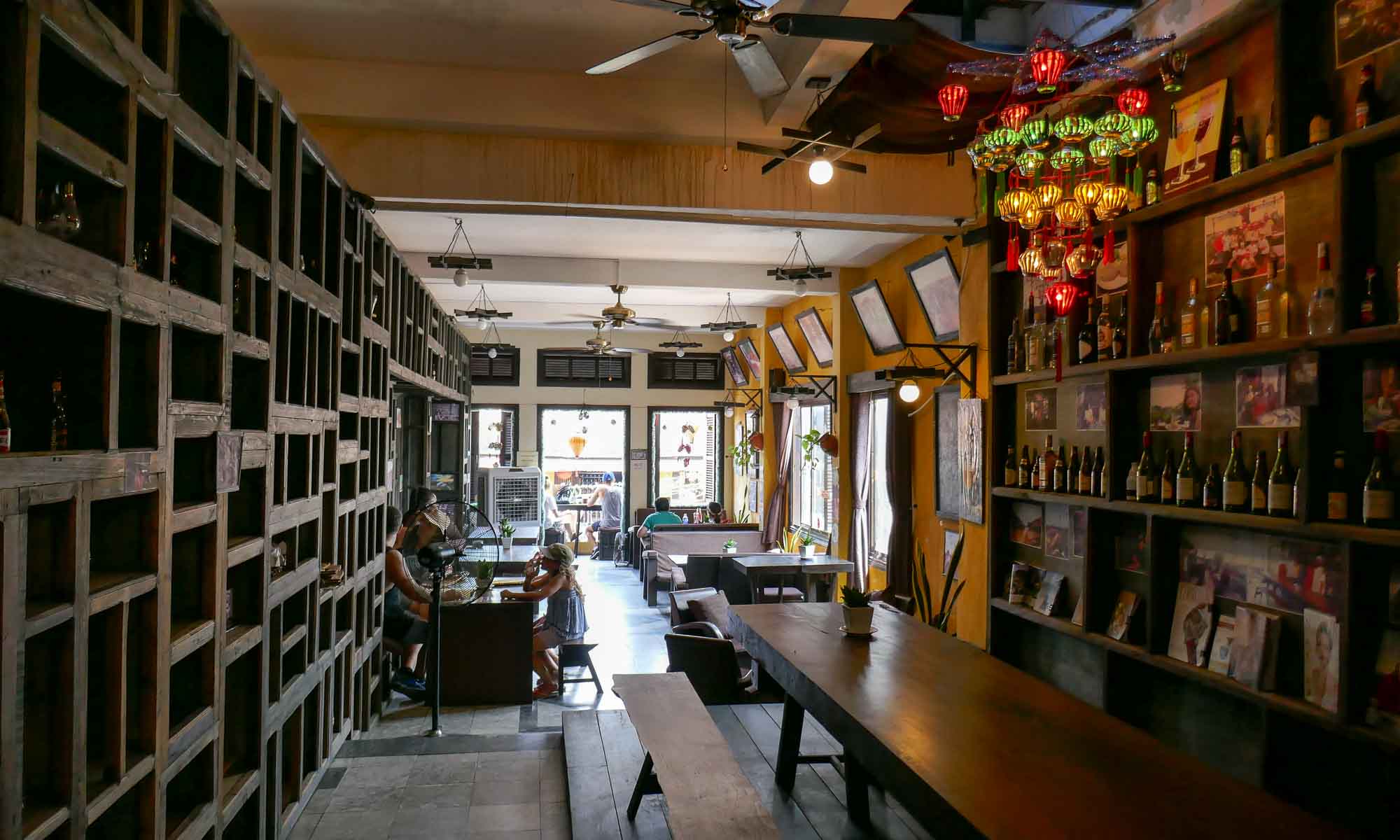
Secret Garden
This was one of the more expensive restaurants we ate at in Hoi An. But driving into Hoi An, we had noticed a billboard stating that there was live music played most nights, and so we decided to splurge out. Situated amidst lots of plants and ponds, on the edge of the Old Town, the tranquil setting was reminiscent of a French garden. While we did not find the food spectacular, it was pleasant and the service was attentive. We were fortunate to meet the owner of the restaurant who definitely though young, pays attention to detail.

Quan An Binh Dan Cuong
Hoi An is known for its Cao Lau, a dish that combines noodles, pork and vegetables. Cao lau can only be prepared in Hoi An, as it is said to be made with noodles that have been boiled using water from specific wells in Hoi An. We decided to try Cao Lau here and it definitely had a unique taste. The location of the restaurant is right on the edge of the night market, and with the decent prices it was not surprising that it was busy.
Bong Hoi An
We ventured further out to this restaurant, which is located on the eastern side of Hoi An on the way to Cua Dai beach. Though the food was good, prices were higher than we expected.
Sleeping in Hoi An
Hoi An Silk Boutique Hotel & Spa
We spent 7 nights at Hoi An Silk Boutique Hotel & Spa and chose the hotel specifically for its location and facilities it provides. The boutique hotel is located just outside the Old Town, and provides complimentary breakfast, bicycles and shuttle service. We were in a deluxe room which was reasonably sized and included a seating area and balcony. As is the norm in most Vietnamese hotels, free bottled water was provided. The staff at the hotel were very friendly, though at times just a tad bit overfriendly which tends to come off as fake, but they were always available to assist. The only negative we encountered was when we requested the staff to reserve train tickets for us. The price quoted was more than 5 times the actual price for the ticket and therefore we declined it. Nevertheless, if we were ever to return to Hoi An, we would more than likely return to this hotel (http://www.hoiansilkhotel.com/).
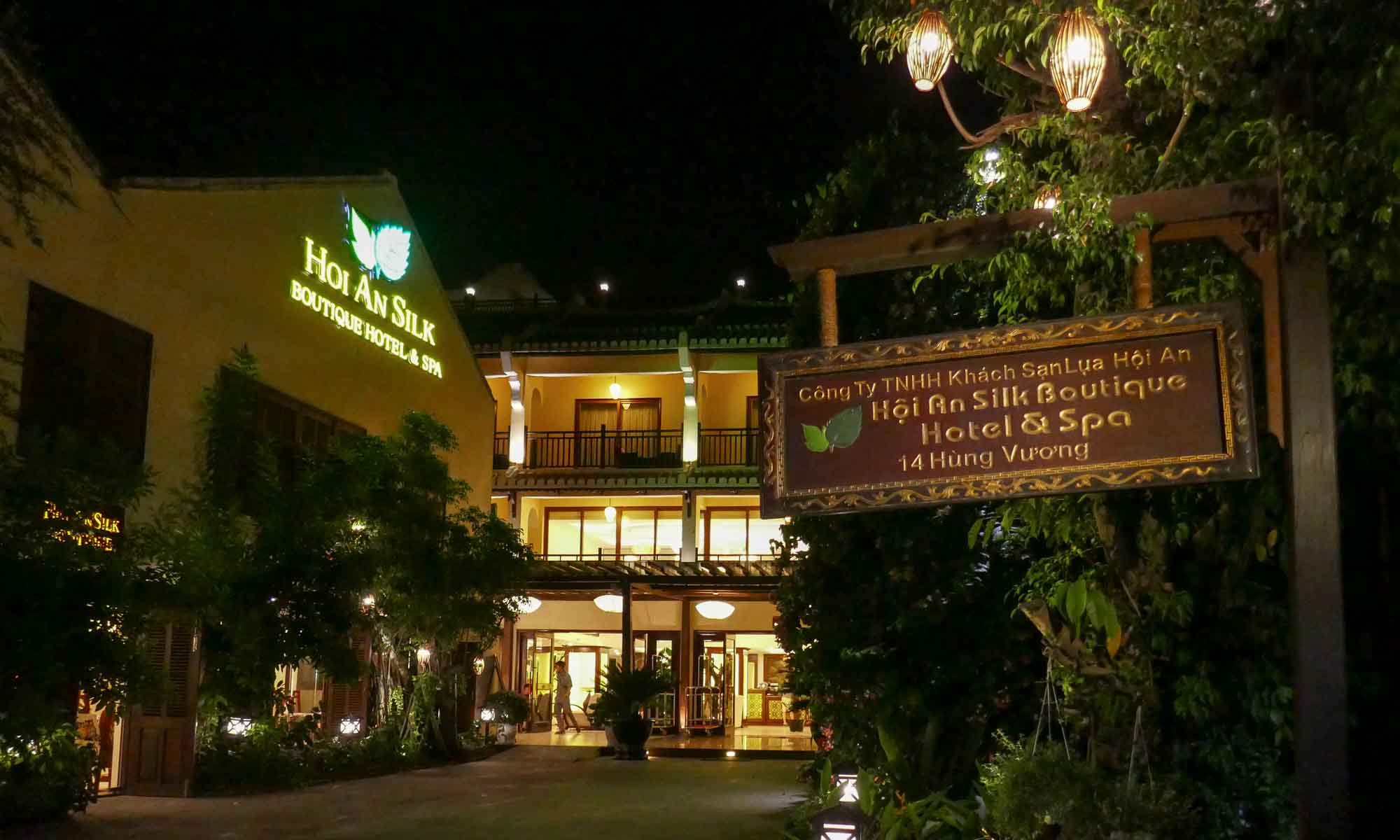
Shopping in Hoi An
Most tourists come to Hoi An looking for custom-made clothes. Driving into Hoi An, the first thing you will notice is the hundreds of tailors. Trying to figure out the wheat from the chaff, involves a lot of research online. Some of the shops appear more upscale than others, with claims of skills being garnered from years of experience abroad. In my view, it all depends on one’s budget, and preference of material which the tailor has in-stock. Seeing as Hoi An attracts loads of tourists here for this one purpose, it is rare to really get a bargain, though of course if compared to Savile Row, it is a bargain.
We selected Eli cloth shop, at 89 Tran Hung Doo, purely due to the materials in-stock which were what we were looking for, and bargained a decent price for two shirts for B.
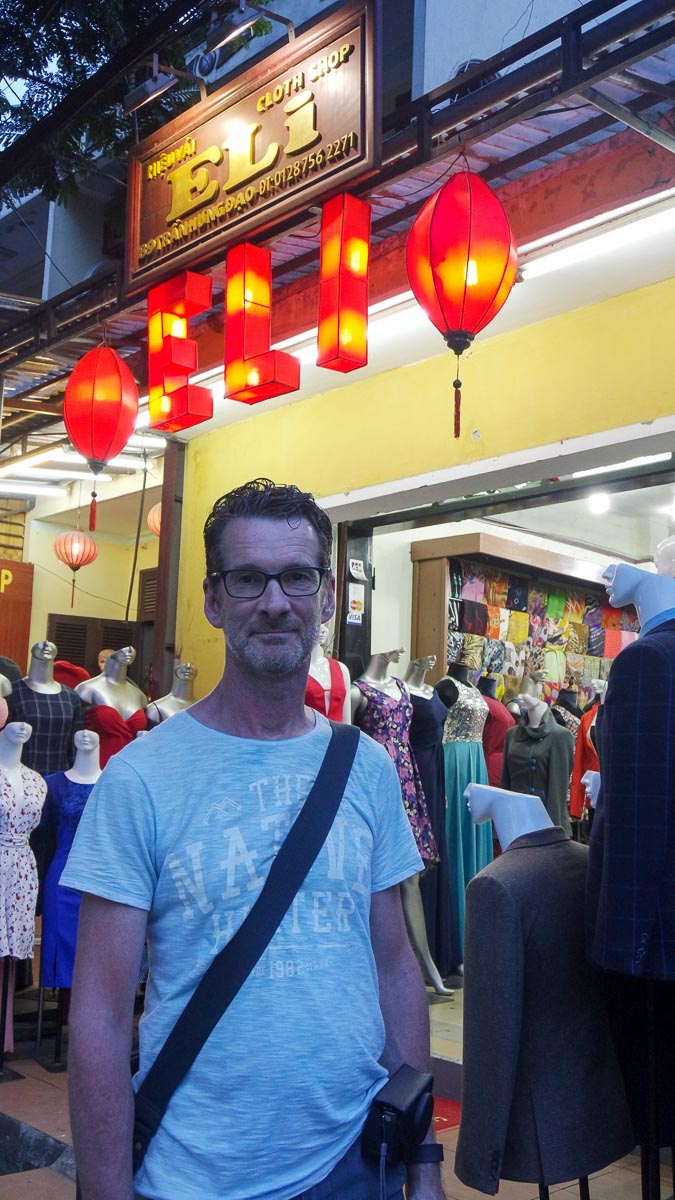
Getting to Hoi An
Hoi An does not have an airport or train station, therefore most travelers arrive at the neighbouring city of Da Nang, which at most is a 45 minute drive. There are public buses from Da Nang airport to Hoi An which run pretty often and are very cheap, the only downside with the buses is that typically the conducters try to scam foreigners to pay higher fares. The most reliable option we found was with Hoi An Express. For $6 per person, they offer pickup from inside baggage claim and dropoff at any hotel.

Getting around Hoi An
The most popular ways to get around Hoi An are by scooters, bicycles or taxis. Our hotel offered complimentary bicycles, so we either walked or biked everywhere.
